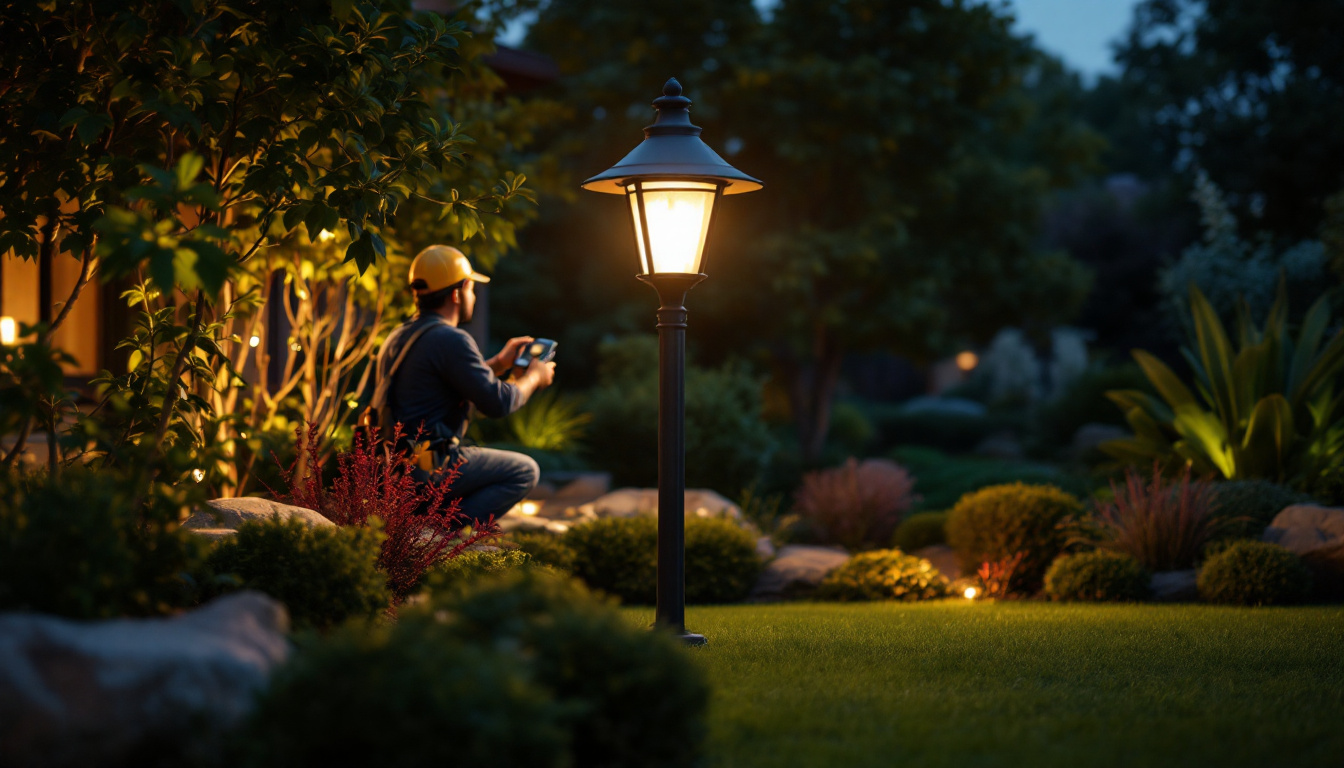
LED (Light Emitting Diode) technology has revolutionized the lighting industry, offering energy efficiency, longevity, and design flexibility that traditional lighting solutions cannot match. For lighting contractors, mastering LED technology is essential to stay competitive and deliver superior results to clients.
At its core, an LED is a semiconductor device that emits light when an electric current passes through it. Unlike incandescent bulbs that produce light through heating a filament, LEDs generate light through electroluminescence, which is far more efficient and produces less heat. This fundamental difference translates into significant benefits for end users and contractors alike. The reduced energy consumption not only lowers electricity bills but also contributes to a smaller carbon footprint, making LED lighting an environmentally friendly choice that appeals to eco-conscious clients.
Lighting contractors must familiarize themselves with the various types of LEDs available, including standard, high-power, and organic LEDs (OLEDs), as well as the myriad of LED fixture designs. Understanding the technical specifications—such as lumens, color temperature, color rendering index (CRI), and beam angle—is crucial for selecting the right product for each project. Additionally, contractors should stay informed about the latest advancements in LED technology, such as smart lighting systems that integrate with home automation, allowing for remote control and energy monitoring. This knowledge not only enhances the contractor’s skill set but also positions them as a forward-thinking professional in a rapidly evolving industry.
Lumens measure the total amount of visible light emitted by a source; this is more important than wattage when comparing brightness. Color temperature, measured in Kelvin (K), affects the ambiance of a space, ranging from warm (2700K) to cool (6500K) light. CRI indicates how accurately a light source reveals colors compared to natural light, with values above 80 considered good for most applications. Understanding these metrics allows contractors to create environments that enhance the mood and functionality of spaces, whether it’s a cozy living room or a vibrant retail store.
Lighting contractors should also consider the beam angle, which determines how light is distributed. Narrow beams are ideal for accent lighting, while wider beams suit general illumination. Mastery of these metrics enables contractors to tailor lighting solutions to client needs precisely. Furthermore, the ability to recommend dimmable LEDs or color-tunable fixtures can significantly enhance a client’s experience, providing them with the flexibility to adjust lighting according to different activities or times of day. As the demand for customizable lighting solutions grows, contractors who can effectively leverage these features will stand out in a competitive marketplace.
One of the most compelling reasons for clients to switch to LED lighting is energy efficiency. LEDs consume up to 75% less energy than incandescent bulbs and last up to 25 times longer. This translates into substantial cost savings over time, both in electricity bills and maintenance expenses. The longevity of LED lights means fewer replacements, which not only saves money but also reduces waste, contributing to a more sustainable environment.
Lighting contractors who can effectively communicate these benefits will find it easier to justify the initial investment in LED systems. Many clients, especially commercial and industrial ones, are increasingly focused on sustainability and operational efficiency, making LED lighting an attractive proposition. Additionally, the improved quality of light provided by LEDs can enhance employee productivity and create a more inviting atmosphere for customers, further justifying the transition.
Providing clients with clear ROI calculations can be a powerful tool. This involves comparing the upfront costs of LED fixtures against the savings from reduced energy consumption and maintenance. For example, a commercial building replacing 100 incandescent bulbs with LEDs could save thousands of dollars annually on energy costs alone. Furthermore, the reduced heat output of LEDs can decrease the load on air conditioning systems, leading to additional savings in cooling costs, which is particularly beneficial in warmer climates.
Contractors should also highlight available incentives and rebates offered by utility companies or government programs aimed at promoting energy-efficient lighting. These can significantly reduce the payback period and increase client buy-in. Moreover, educating clients about the long-term benefits of LED lighting, such as improved safety due to better visibility and reduced risk of burnout, can further enhance their willingness to invest. By presenting a comprehensive picture of both immediate and future savings, contractors can foster a deeper understanding of the value that LED lighting brings to their clients’ operations.
Proper installation is critical to maximizing the benefits of LED lighting. Unlike traditional lighting, LEDs require attention to heat management, electrical compatibility, and fixture design to perform optimally. The unique characteristics of LED technology necessitate a thorough understanding of the specific requirements for installation, which can significantly impact both performance and energy efficiency.
Lighting contractors must ensure that LED fixtures have adequate heat sinks or cooling mechanisms, as excessive heat can degrade LED lifespan and performance. Additionally, verifying that the electrical supply matches the LED’s voltage and current requirements prevents premature failure. It is also advisable to consider the ambient temperature of the installation environment, as extreme temperatures can further affect the operation of LED fixtures. For instance, in high-temperature settings, selecting LEDs with higher thermal tolerances can help maintain efficiency and longevity.
Many clients expect LED lighting to be dimmable, but not all LEDs are compatible with existing dimmer switches. Contractors should specify and install compatible dimming controls to avoid flickering or reduced lifespan. Understanding the difference between leading-edge and trailing-edge dimmers and their compatibility with LED drivers is essential. Leading-edge dimmers, often used for incandescent bulbs, may not provide smooth dimming for LEDs, while trailing-edge dimmers are designed to work better with the electronic components of LED systems.
Furthermore, contractors should be aware of the potential for electromagnetic interference (EMI) and ensure that LED drivers meet relevant standards to prevent issues in sensitive environments. This is particularly important in commercial settings where electronic devices may be affected by fluctuations in power supply. Additionally, implementing proper wiring techniques and using shielded cables can help mitigate EMI, ensuring that both the lighting system and other electronic devices operate without disruption. By taking these factors into account, contractors can enhance the overall reliability and user satisfaction of LED installations.
LED technology offers unparalleled flexibility in lighting design. From architectural accent lighting to industrial high bays, LEDs can be customized in terms of shape, size, color, and control options. This adaptability allows for innovative designs that can seamlessly blend into various environments, whether it be a sleek modern office or a rustic warehouse. The ability to create bespoke lighting solutions means that contractors can meet the specific needs of each project, ensuring that every space is not only functional but also visually appealing.
Lighting contractors should leverage this versatility to create solutions that enhance aesthetics, functionality, and energy efficiency. For example, tunable white LEDs allow adjustment of color temperature throughout the day to support circadian rhythms in office environments, improving occupant well-being and productivity. Additionally, the use of color-changing LEDs can transform a space for different events or moods, providing an extra layer of customization that can be particularly beneficial in hospitality settings or retail environments where ambiance plays a crucial role in customer experience.
The integration of LED lighting with smart controls is a growing trend that lighting contractors must embrace. Systems that incorporate sensors, timers, and wireless controls enable dynamic lighting scenes, occupancy-based activation, and daylight harvesting, further reducing energy consumption. These advancements not only contribute to sustainability efforts but also provide users with the ability to create personalized lighting experiences that can be adjusted based on specific tasks or preferences, enhancing the overall usability of a space.
Contractors should become proficient in programming and installing these systems, as clients increasingly demand intelligent lighting solutions that can be managed remotely via smartphones or building management systems. Moreover, the rise of IoT (Internet of Things) technology means that lighting can now be integrated with other smart systems in a building, such as HVAC and security, leading to a more cohesive and efficient management of resources. As the market continues to evolve, staying updated on the latest technologies and trends will empower contractors to offer cutting-edge solutions that not only meet but exceed client expectations.
The LED lighting industry evolves rapidly, with ongoing advancements in technology, materials, and standards. Lighting contractors must commit to continuous education through manufacturer training, industry conferences, and certification programs.
Engaging with professional organizations and networking with peers provides valuable insights into emerging trends and best practices. Staying informed ensures that contractors can offer cutting-edge solutions and maintain a competitive edge.
Building strong relationships with LED manufacturers and distributors can provide contractors with early access to new products, technical support, and training resources. These partnerships can also facilitate better pricing and project collaboration, enhancing overall service quality.
For lighting contractors, mastering LED light technology is not merely about understanding a product—it’s about embracing a comprehensive approach that includes technical knowledge, design acumen, installation expertise, and ongoing education.
By focusing on energy efficiency, client education, installation best practices, and smart integration, contractors can deliver superior lighting solutions that meet modern demands. This mastery will position contractors as trusted advisors and leaders in the rapidly evolving lighting industry.
Ready to elevate your lighting projects with the highest quality LED solutions? At LumenWholesale, we provide lighting contractors like you with spec-grade lighting products at unbeatable wholesale prices. Say goodbye to middleman markups and hello to a vast selection of reliable, high-performance lighting that meets the most rigorous industry standards. Plus, with free shipping on bulk orders, you can stock up on premium lighting without any hidden fees or compromises. Don’t miss out on the perfect combination of quality, affordability, and convenience. Discover the value of wholesale lighting and make LumenWholesale your go-to source for all your lighting needs. Wholesale Lighting at the Best Value

Discover expert tips and strategies for lighting contractors to excel in yard lamp installations.

Discover why the light bulb twist base is an essential tool for every lighting contractor.

Explore the impact of street light sales on lighting contractors’ profitability.

Discover everything outdoor lighting contractors need to know about linkable outdoor lights.